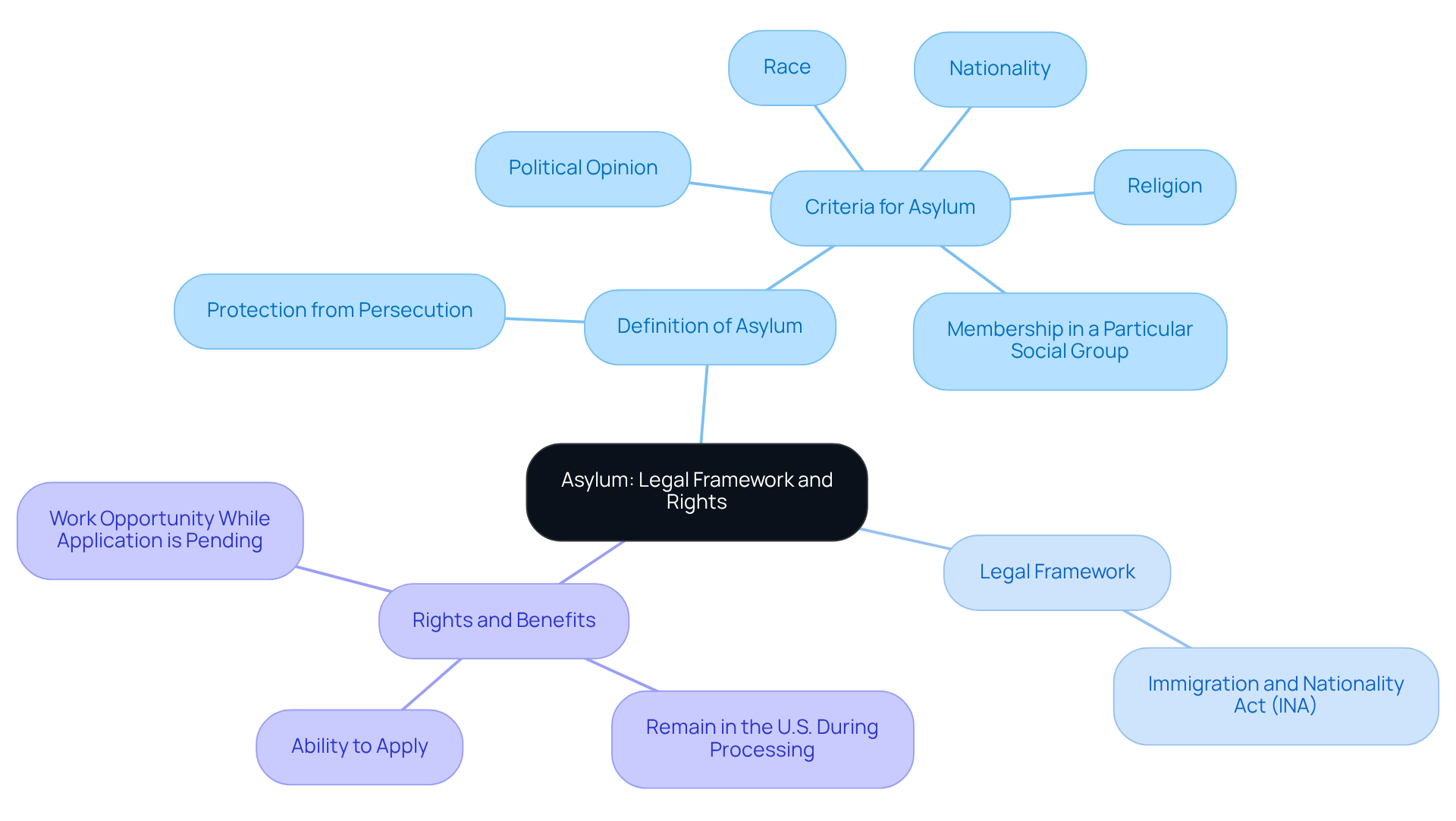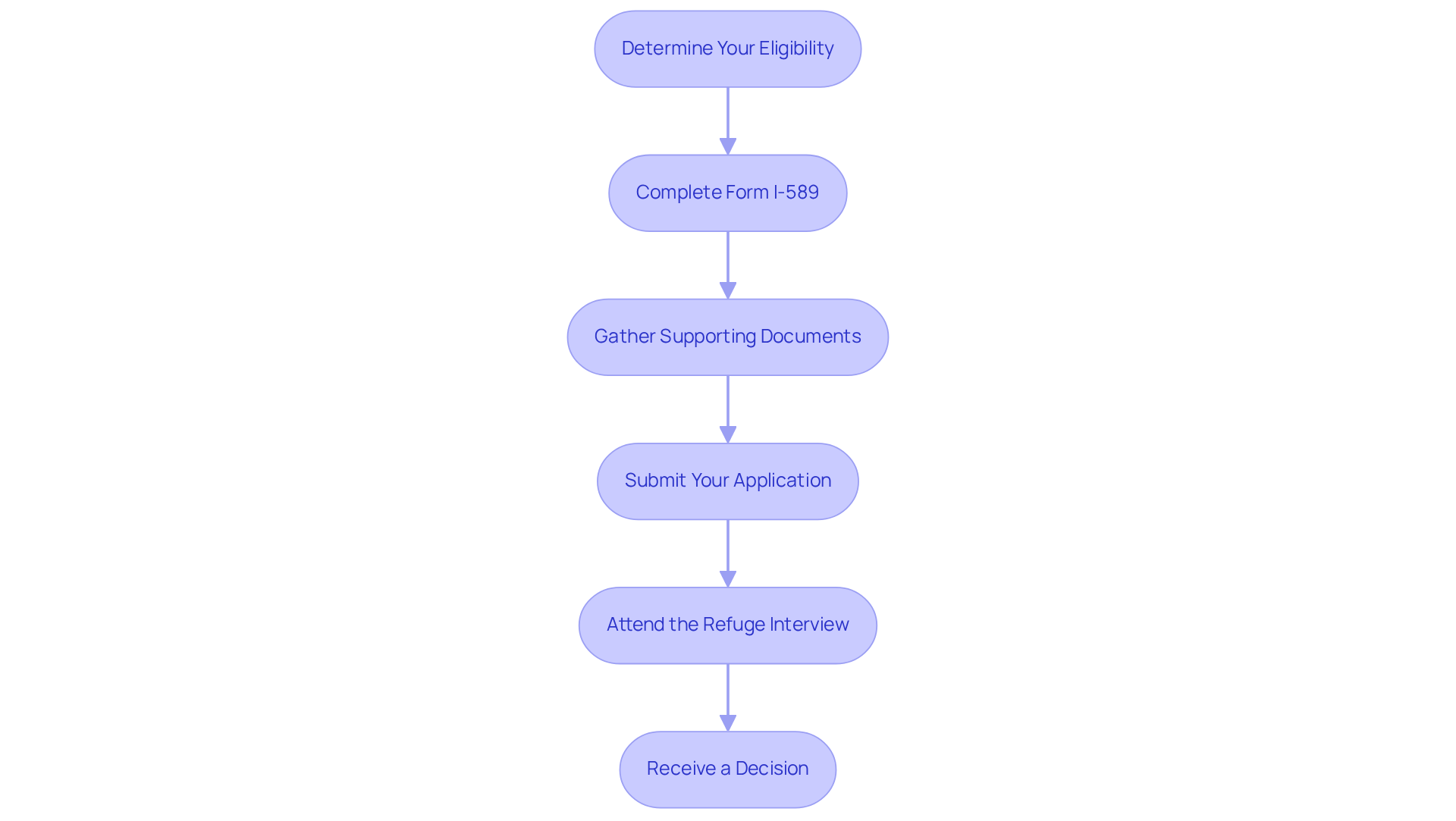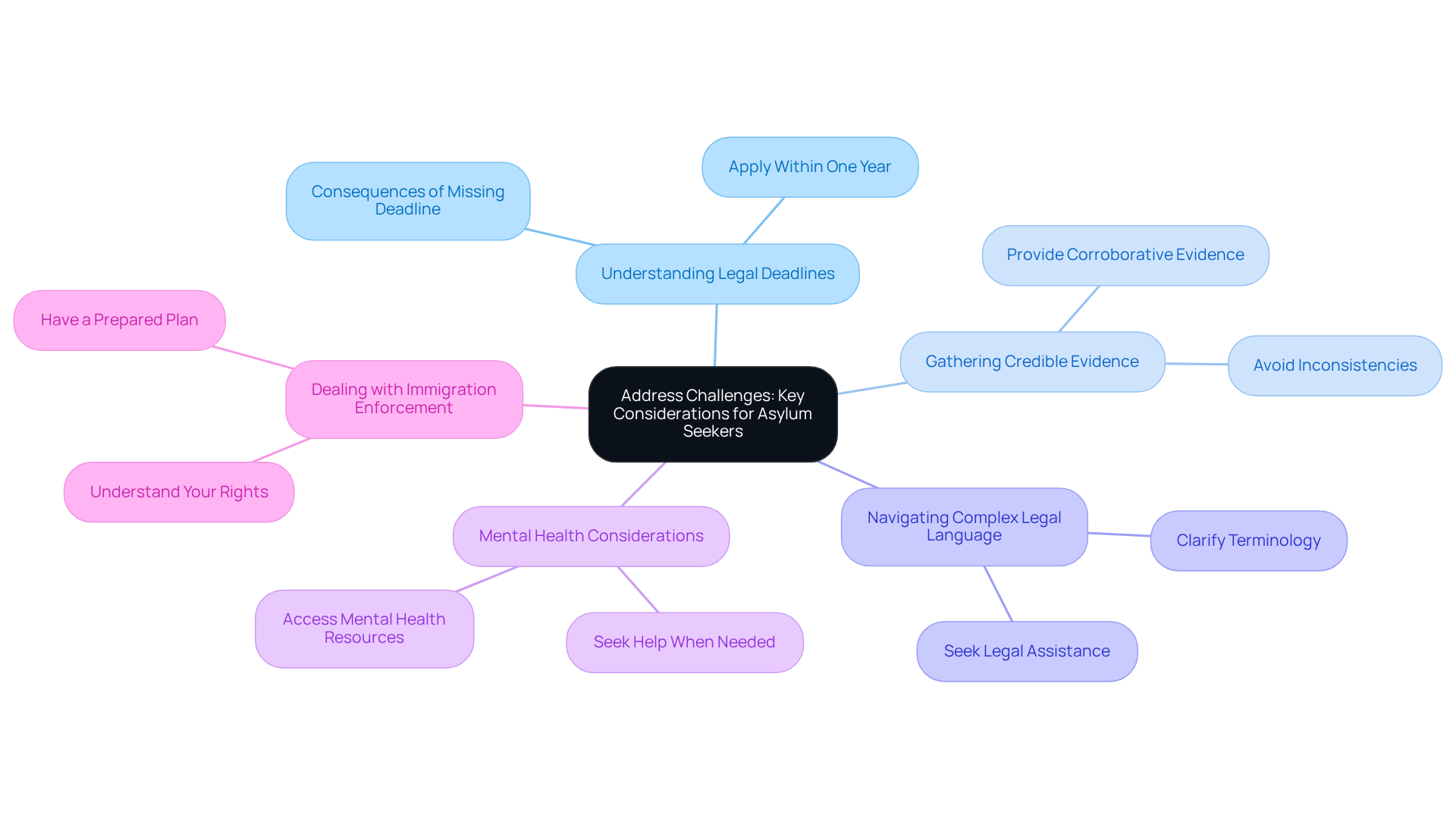Overview
This article serves as a comprehensive guide for immigrant healthcare workers seeking asylum in the United States. It thoughtfully outlines the legal framework, application process, and key considerations, recognizing the unique challenges you may face along this journey.
Understanding the eligibility criteria is crucial for you. Gathering credible evidence and seeking legal assistance can make a significant difference in navigating the complexities of the asylum process. It’s important to remember that you are not alone in this; there are resources available to help you advocate for your rights and well-being.
As you embark on this challenging path, we encourage you to take proactive steps. Reach out for guidance and support, and know that there are people who care about your situation. Together, we can work towards a brighter future for you and your loved ones.
Introduction
Navigating the asylum process can feel overwhelming, especially for immigrant healthcare workers who encounter unique challenges in their pursuit of safety and stability. Asylum is not just a legal term; it represents a vital lifeline, offering protection for those fleeing persecution. Yet, understanding the legal framework and the rights associated with it is crucial for success.
How can you ensure that you not only meet the eligibility criteria but also effectively advocate for your rights in such a complex legal landscape? This guide is here to demystify the asylum application process, providing a step-by-step approach designed to empower you as you seek refuge in the United States.
Define Asylum: Legal Framework and Rights
Asilo offers a vital form of international protection for individuals who have fled their home countries, often driven by a deep-seated fear of persecution due to their race, religion, nationality, political opinion, or membership in a particular social group. It's important to remember that under U.S. law, those seeking asilo must be physically present in the United States or arrive at a port of entry to apply for this protection.
The legal framework that governs asilo is primarily outlined in the Immigration and Nationality Act (INA). This act not only establishes the rights of those seeking refuge but also provides essential benefits, such as:
- The ability to apply for asilo
- The option to remain in the U.S. while their application is being processed
- The opportunity to work if their asilo application is pending for a certain period
is crucial, especially for immigrant healthcare workers navigating this complex legal landscape.
You may be feeling overwhelmed by the intricacies of the asilo process, but know that you are not alone. Many have faced similar challenges and found their way through. Seeking legal assistance can be a significant step toward ensuring your rights are protected and your journey is supported. Remember, you have the strength to advocate for yourself and your future.

Navigate the Asylum Application Process: Step-by-Step Guide
- Determine Your Eligibility: It's essential to first ensure that you meet the eligibility criteria for protection. This includes being physically present in the U.S. and having a . You may be feeling overwhelmed, but understanding these criteria is the first step in your journey.
- Complete Form I-589: Next, fill out the Application for Protection and for Withholding of Removal (Form I-589). This form requires detailed information about your identity, the reasons you are seeking refuge, and any supporting evidence. Take your time with this step; it's important to be thorough.
- Gather Supporting Documents: Collecting evidence that supports your claim is crucial. This may include personal statements, witness affidavits, and any relevant medical or police records. Remember, these documents can help tell your story, so be sure to include everything that might support your case.
- Submit Your Application: Once your Form I-589 is completed, file it with the appropriate U.S. Citizenship and Immigration Services (USCIS) office. Make sure to keep copies of everything you submit. It's important to stay organized during this process.
- Attend the Refuge Interview: After submitting your application, you will be scheduled for an interview with a refuge officer. Prepare thoroughly for this interview, as it is a critical part of the process. You may be feeling anxious, but remember that this is your opportunity to share your story.
- Receive a Decision: After the interview, you will receive a decision on your application. If granted asilo, you will be permitted to stay in the U.S. and may apply for permanent residency after one year. This decision can change your life, and it’s important to stay hopeful throughout the process.

Address Challenges: Key Considerations for Asylum Seekers
- Understanding legal deadlines is crucial, as individuals seeking asilo must apply within one year of their arrival in the U.S. Missing this deadline can lead to automatic rejection of your request, which can be a daunting prospect.
- Gathering Credible Evidence: You may be feeling overwhelmed, but providing credible and corroborative evidence is essential to support your claim. Remember, inconsistencies or a lack of evidence can lead to denials, so gathering the right documentation is crucial.
- Navigating Complex Legal Language: The refugee application process involves complex legal terminology that can be confusing. Seeking assistance from legal professionals or organizations specializing in immigration law can help clarify these terms and ease your journey.
- Mental health considerations are important, as many individuals in asilo experience trauma and mental health challenges during this process. Accessing mental health resources and support can be vital for your well-being, and it’s okay to seek help when you need it.
- Dealing with Immigration Enforcement: You might be anxious about potential interactions with immigration enforcement. Understanding your rights and having a plan in place can help mitigate that anxiety, ensuring you feel safer and more prepared.

Conclusion
Asilo serves as a crucial lifeline for individuals fleeing persecution, offering not only legal protections but also the opportunity to rebuild their lives in safety. It’s important to understand the intricacies of the asylum process, especially for immigrant healthcare workers who may encounter unique challenges in navigating this complex legal landscape.
Throughout this guide, we have outlined key steps to demystify the asylum application process—from determining eligibility to preparing for the critical interview with a refuge officer. Important considerations, such as adhering to legal deadlines, gathering credible evidence, and addressing mental health needs, have been highlighted to ensure that you can approach your journey with confidence and clarity.
Ultimately, the significance of understanding and advocating for your rights cannot be overstated. For immigrant healthcare workers seeking asylum, accessing the necessary resources and support can profoundly impact your quest for safety and stability. By taking informed steps and seeking assistance when needed, you can empower yourself in the face of adversity and pave the way for a hopeful future. Remember, you are not alone in this journey, and the support you seek is within reach.
Frequently Asked Questions
What is asylum (asilo)?
Asylum is a form of international protection for individuals who have fled their home countries due to a fear of persecution based on race, religion, nationality, political opinion, or membership in a particular social group.
What are the requirements to apply for asylum in the U.S.?
To apply for asylum in the U.S., individuals must be physically present in the United States or arrive at a port of entry.
What legal framework governs asylum in the U.S.?
The legal framework for asylum in the U.S. is primarily outlined in the Immigration and Nationality Act (INA).
What rights do individuals seeking asylum have under U.S. law?
Individuals seeking asylum have the right to apply for asylum, remain in the U.S. while their application is processed, and work if their application is pending for a certain period.
Why is understanding asylum rights important for immigrant healthcare workers?
Understanding asylum rights is crucial for immigrant healthcare workers as they navigate the complex legal landscape related to their status and rights in the U.S.
What should individuals do if they feel overwhelmed by the asylum process?
If individuals feel overwhelmed by the asylum process, seeking legal assistance can help ensure their rights are protected and provide support throughout their journey.




